A fun art activity to experiment with the use of line and pattern.
Use this teaching resource when studying line as one of the Elements of Visual Art. Through drawing, students explore the idea that a line can express a particular mood or emotion.
Updated: 09 Mar 2021
A fun art activity to experiment with the use of line and pattern.
Non-Editable: PDF
Pages: 1 Page
Grades: K - 2
Identify the elements of art, including line, shape, color, texture, and form, and the principles of design, including repetition/pattern and balance, in the environment.
Create artworks using a variety of lines, shapes, colors, textures, and forms;
Identify the elements of art, including line, shape, color, texture, and form, and the principles of design, including emphasis, repetition/pattern, and balance, in nature and human-made environments.
Invent images that combine a variety of lines, shapes, colors, textures, and forms;
Identify the elements of art, including line, shape, color, texture, form, and space, and the principles of design, including emphasis, repetition/pattern, movement/rhythm, and balance.
Express ideas and feelings in personal artworks using a variety of lines, shapes, colors, textures, forms, and space;
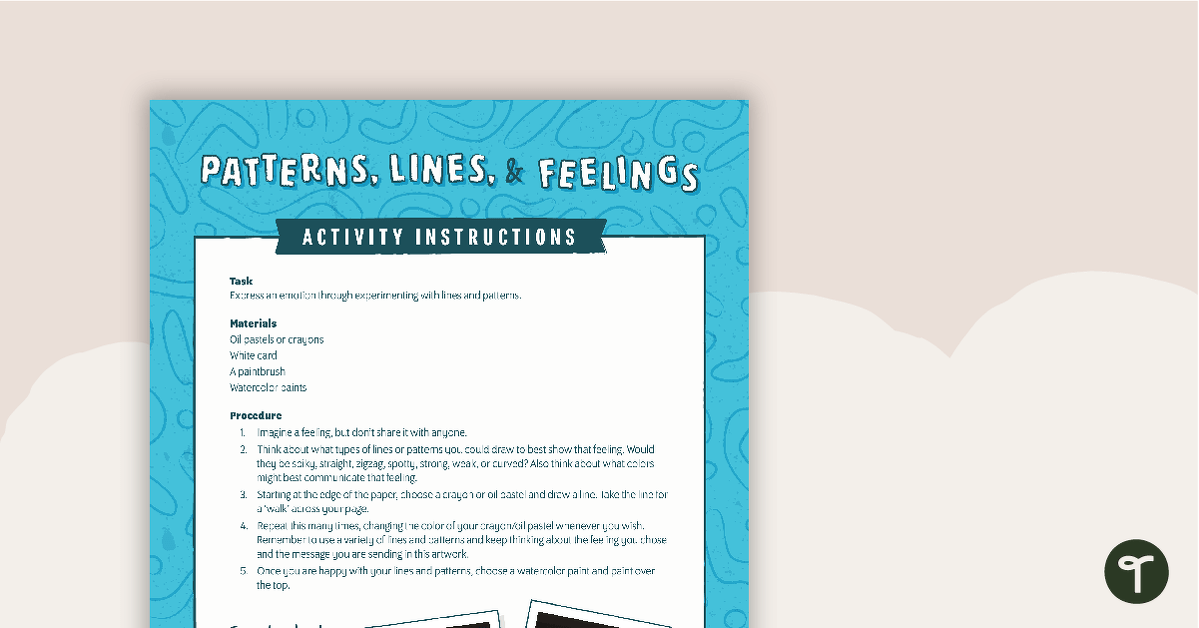
A fun art activity to experiment with the use of line and pattern.
Use this teaching resource when studying line as one of the Elements of Visual Art. Through drawing, students explore the idea that a line can express a particular mood or emotion.
Identify the elements of art, including line, shape, color, texture, and form, and the principles of design, including repetition/pattern and balance, in the environment.
Create artworks using a variety of lines, shapes, colors, textures, and forms;
Identify the elements of art, including line, shape, color, texture, and form, and the principles of design, including emphasis, repetition/pattern, and balance, in nature and human-made environments.
Invent images that combine a variety of lines, shapes, colors, textures, and forms;
Identify the elements of art, including line, shape, color, texture, form, and space, and the principles of design, including emphasis, repetition/pattern, movement/rhythm, and balance.
Express ideas and feelings in personal artworks using a variety of lines, shapes, colors, textures, forms, and space;

We create premium quality, downloadable teaching resources for primary/elementary school teachers that make classrooms buzz!
Would you like something changed or customised on this resource? While our team makes every effort to complete change suggestions, we can't guarantee that every change will be completed.
Did you spot an error on this resource? Please let us know and we will fix it shortly.
Are you having trouble downloading or viewing this resource? Please try the following steps:
If you are still having difficulty, please visit the Teach Starter Help Desk or contact us .
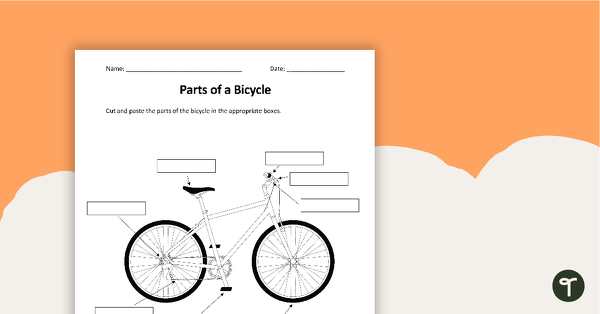
A worksheet to practice labeling the parts of a bicycle.
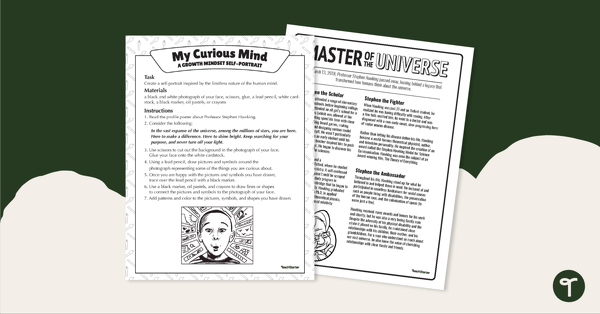
Create a self-portrait inspired by the limitless nature of the human mind with this art activity.
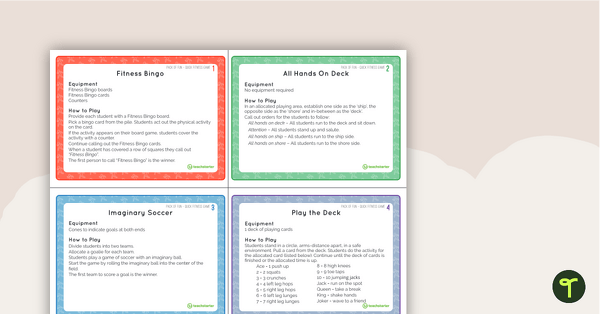
14 quick, easy, and fun fitness activities for all ages.
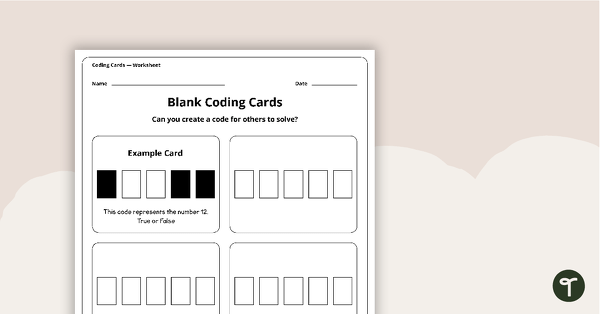
A worksheet to assist students in creating their own binary codes.
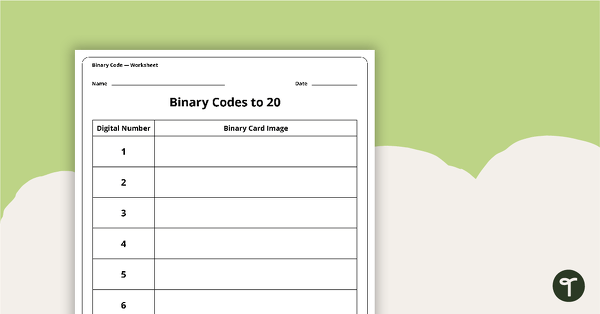
An activity for students to complete when learning how to read and write in code.
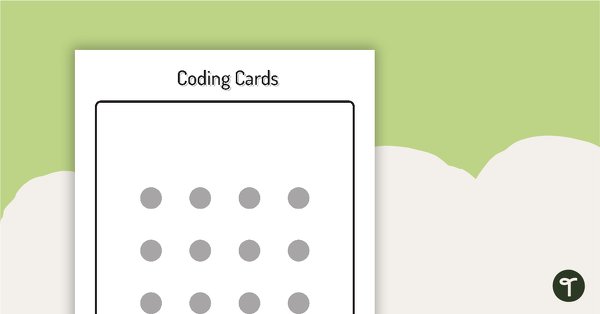
Use these binary coding cards to demonstrate how to ‘switch’ a ‘digit’ on or off.
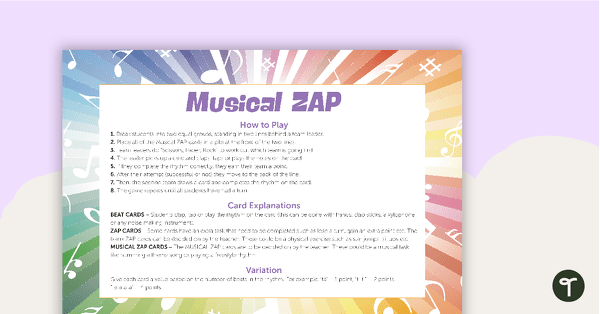
A fun group game to play when learning notes and rhythms.
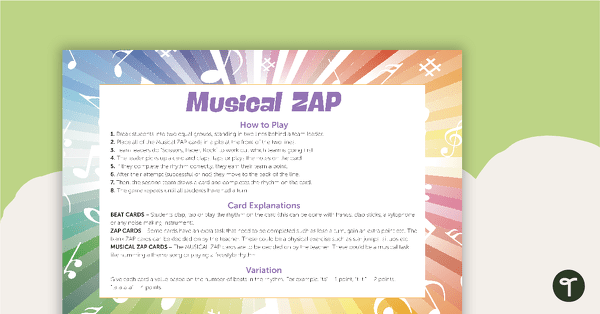
A fun group game to play when learning notes and rhythms.
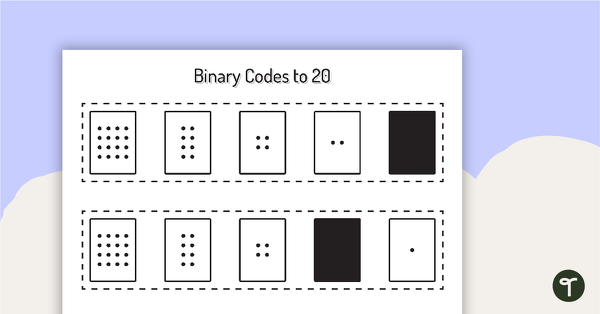
Coding cards for teachers to use when teaching about the total numeric value of a bit code.
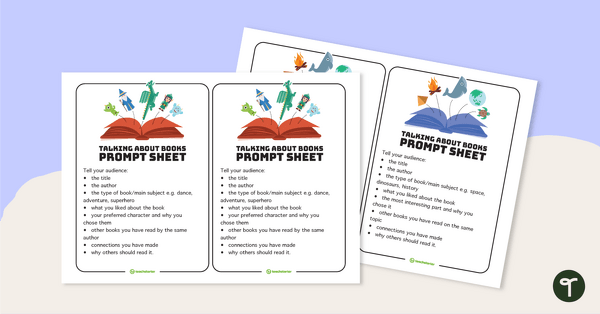
Prompts for students to use when orally discussing books.
0 Comments
Write a review to help other teachers and parents like yourself. If you'd like to request a change to this resource, or report an error, select the corresponding tab above.